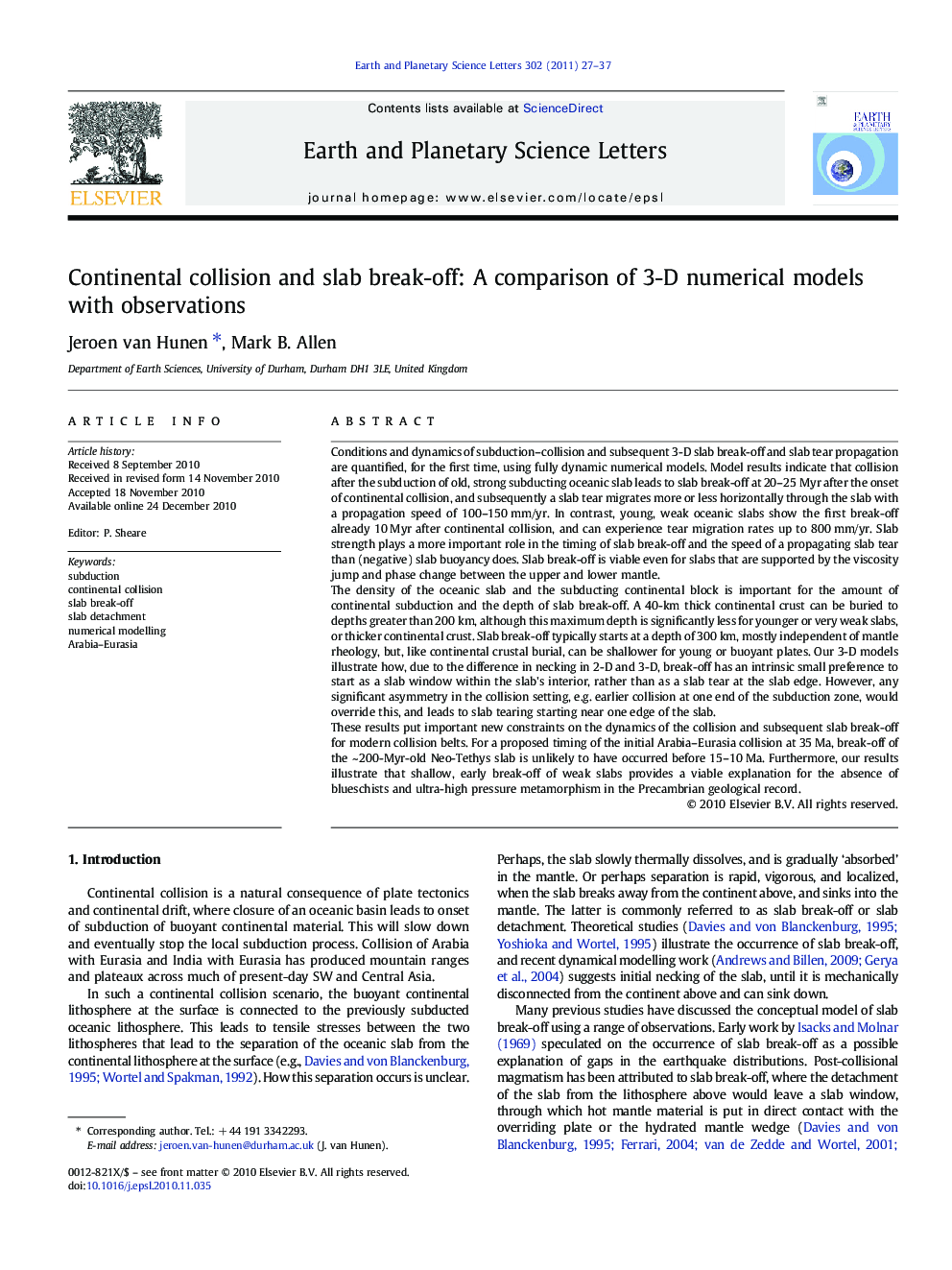| کد مقاله | کد نشریه | سال انتشار | مقاله انگلیسی | نسخه تمام متن |
|---|---|---|---|---|
| 6430766 | 1634836 | 2011 | 11 صفحه PDF | دانلود رایگان |

Conditions and dynamics of subduction-collision and subsequent 3-D slab break-off and slab tear propagation are quantified, for the first time, using fully dynamic numerical models. Model results indicate that collision after the subduction of old, strong subducting oceanic slab leads to slab break-off at 20-25Â Myr after the onset of continental collision, and subsequently a slab tear migrates more or less horizontally through the slab with a propagation speed of 100-150Â mm/yr. In contrast, young, weak oceanic slabs show the first break-off already 10Â Myr after continental collision, and can experience tear migration rates up to 800Â mm/yr. Slab strength plays a more important role in the timing of slab break-off and the speed of a propagating slab tear than (negative) slab buoyancy does. Slab break-off is viable even for slabs that are supported by the viscosity jump and phase change between the upper and lower mantle.The density of the oceanic slab and the subducting continental block is important for the amount of continental subduction and the depth of slab break-off. A 40-km thick continental crust can be buried to depths greater than 200Â km, although this maximum depth is significantly less for younger or very weak slabs, or thicker continental crust. Slab break-off typically starts at a depth of 300Â km, mostly independent of mantle rheology, but, like continental crustal burial, can be shallower for young or buoyant plates. Our 3-D models illustrate how, due to the difference in necking in 2-D and 3-D, break-off has an intrinsic small preference to start as a slab window within the slab's interior, rather than as a slab tear at the slab edge. However, any significant asymmetry in the collision setting, e.g. earlier collision at one end of the subduction zone, would override this, and leads to slab tearing starting near one edge of the slab.These results put important new constraints on the dynamics of the collision and subsequent slab break-off for modern collision belts. For a proposed timing of the initial Arabia-Eurasia collision at 35Â Ma, break-off of the ~Â 200-Myr-old Neo-Tethys slab is unlikely to have occurred before 15-10Â Ma. Furthermore, our results illustrate that shallow, early break-off of weak slabs provides a viable explanation for the absence of blueschists and ultra-high pressure metamorphism in the Precambrian geological record.
Research Highlightsâº3-D fully dynamic modelling of slab detachment. âºDetachment 10-25 Myrs after continental collision. âºBreak-off intrinsically prefers to start in the middle of the slab. âºSlab break-off at Arabia-Eurasia was not before 10-15 Ma.
Journal: Earth and Planetary Science Letters - Volume 302, Issues 1â2, 1 February 2011, Pages 27-37